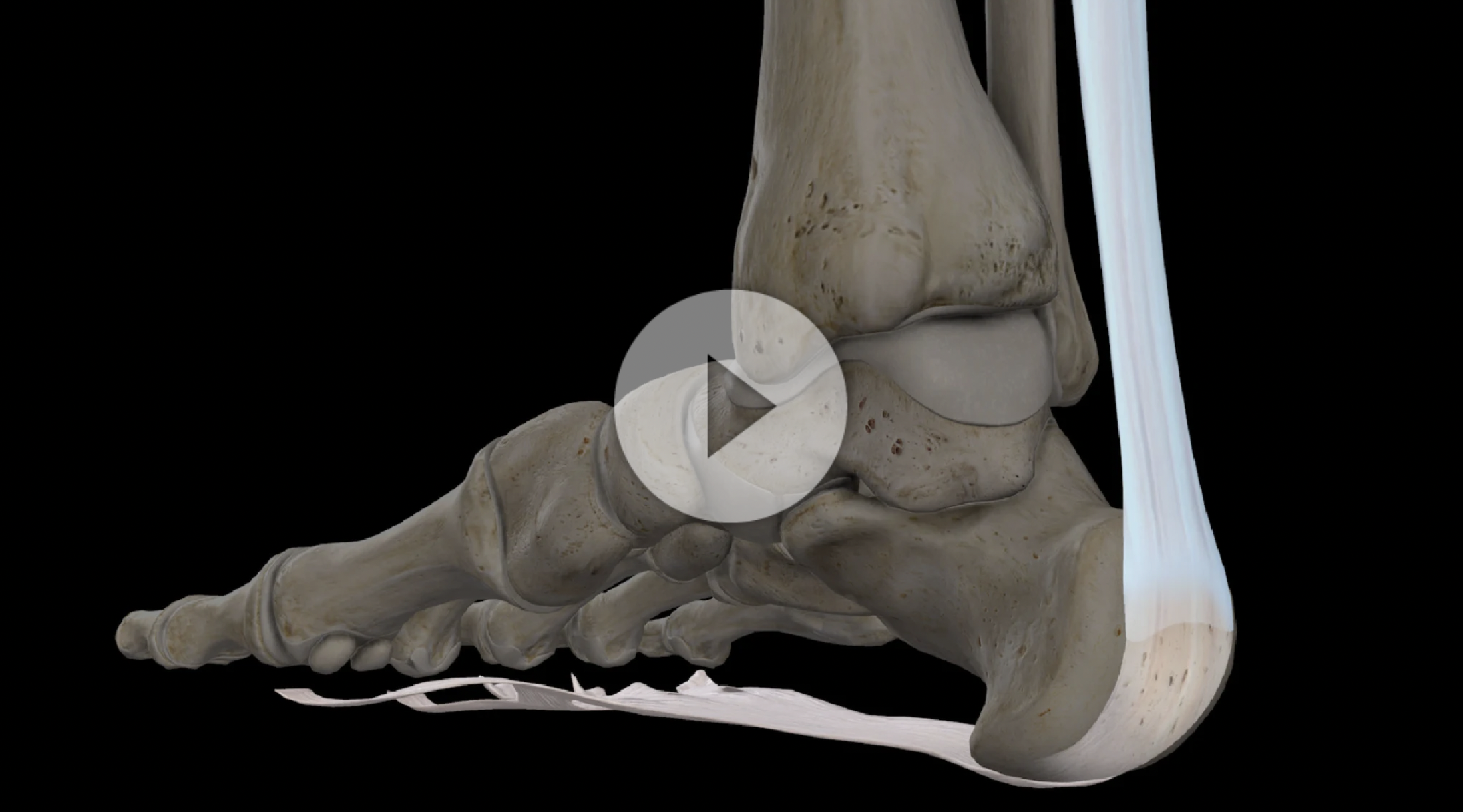
Ankle Overview
Ankle Anatomy
The ankle is a remarkably complex joint consisting of important bones, ligaments, and tendons that provide the necessary force for push-off during walking, running, and playing various sports. The ankle is made up of three bones: the tibia (shin bone), the fibula (thin bone along the outer part of the shin that forms the bony prominence on the outer part of the ankle), and the talus. There’s also a number of important ligaments and tendons that stabilize the ankle joint and provide for motion. Because of the complex forces required for running, cutting, and pivoting, a number of injuries can affect the ankle. Orthopedic Surgeon and Sports Medicine specialist, Dr. Jonathan Koscso, successfully diagnoses and treats patients in Sarasota, FL and the surrounding Gulf Coast region who have experienced an ankle injury.
Bony Anatomy of the Ankle
Three major bones meet to form the ankle joint, each playing a critical role in the function of the ankle:
Tibia: Also called the shin bone, this bone runs from the knee down to the top of the foot and is the primary load-bearing bone within the lower leg.
Fibula: this long, thin bone runs along the lateral (outer) part of the leg from the knee to the foot. Though this bone doesn’t bear a significant amount of weight, it is crucial to providing stability to the ankle joint. Ankle fractures nearly always involve a fracture of the fibula.
Talus: this small bone at the base of the ankle joint transmits all weight bearing loads across the ankle joint. It also forms an important connection with the heel bone and the mid-foot to transmit the necessary loads for walking and running.
Soft Tissue Anatomy of the Ankle
The ankle cannot offer mobility and strength without other supporting structures that help it move and keep it functioning properly. Ankle stability is achieved with the help of muscles, tendons, ligaments and cartilage. These important structures include:
Cartilage: Often called articular cartilage, this slippery tissue covers both the ends of the bones and allows them to glide together easily. In the ankle joint, cartilage covers the ends of the tibia and fibula bones as well as the dome (top) of the talus. The breakdown of this cartilage can lead to ankle arthritis.
Ligaments: a number of ligaments are found on the lateral (outer) and medial (inner) aspects of the ankle and provide stability to the joint. Ankle sprains are very common injuries in athletes of all ages and involve disruption of these ligaments. Low ankle sprains are most common and involve injuries to the ligaments that connect the fibula to the talus (and/or calcaneus), whereas high ankle sprains involve injury to a group of ligaments that connect the tibia to the fibula.
Muscles / Tendons: several tendons (which connect muscles to bones) cross the ankle joint and provide the necessary force for walking, running, and other sport movements. The Achilles tendon is a crucial structure which connects the calf muscles to the base of the heel bone, and thus, an Achilles tendon injury can be a debilitating condition.
About the Author
Dr. Jonathan Koscso is an orthopedic surgeon and sports medicine specialist at Kennedy-White Orthopaedic Center in Sarasota, FL. Dr. Koscso treats a vast spectrum of sports conditions, including shoulder, elbow, knee, and ankle disorders. Dr. Koscso was educated at the University of South Florida and the USF Morsani College of Medicine, followed by orthopedic surgery residency at Washington University in St. Louis/Barnes-Jewish Hospital and sports medicine & shoulder surgery fellowship at the Hospital for Special Surgery in New York City, the consistent #1 orthopaedic hospital as ranked by U.S. News & World Report. He has been a team physician for the New York Mets, Iona College Athletics, and NYC’s PSAL.
Disclaimer: All materials presented on this website are the opinions of Dr. Jonathan Koscso and any guest writers, and should not be construed as medical advice. Each patient’s specific condition is different, and a comprehensive medical assessment requires a full medical history, physical exam, and review of diagnostic imaging. If you would like to seek the opinion of Dr. Jonathan Koscso for your specific case, we recommend contacting our office to make an appointment.



